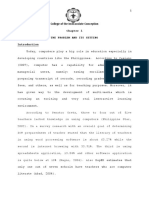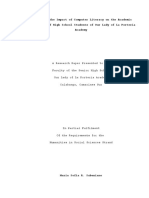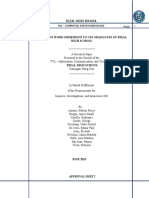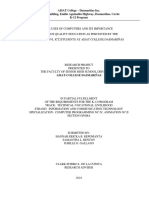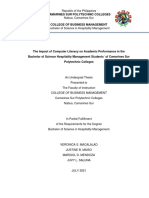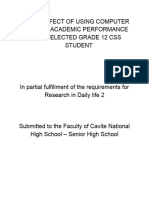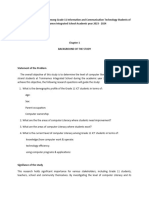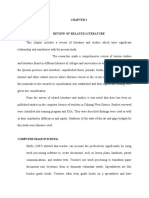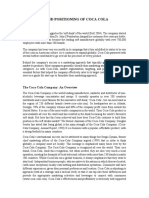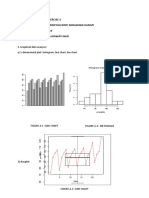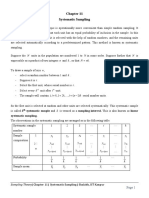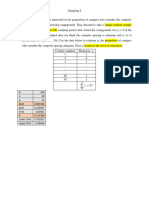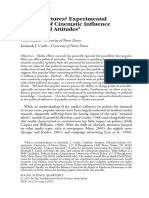100% found this document useful (2 votes)
2K views29 pagesComputer Literacy and Usage Computer
This document summarizes a research study on the computer literacy and usage of teachers at General Santos City National High School. The study aims to assess the teachers' levels of computer literacy in areas like computer operations, Microsoft Word, and the internet. It also examines problems teachers encounter using computers. The results will be used to design a computer training program to improve teacher computer skills. The study involves surveying teachers on their computer backgrounds and usage to address gaps in literacy.
Uploaded by
John Cyriel AgueloCopyright
© © All Rights Reserved
We take content rights seriously. If you suspect this is your content, claim it here.
Available Formats
Download as DOCX, PDF, TXT or read online on Scribd
100% found this document useful (2 votes)
2K views29 pagesComputer Literacy and Usage Computer
This document summarizes a research study on the computer literacy and usage of teachers at General Santos City National High School. The study aims to assess the teachers' levels of computer literacy in areas like computer operations, Microsoft Word, and the internet. It also examines problems teachers encounter using computers. The results will be used to design a computer training program to improve teacher computer skills. The study involves surveying teachers on their computer backgrounds and usage to address gaps in literacy.
Uploaded by
John Cyriel AgueloCopyright
© © All Rights Reserved
We take content rights seriously. If you suspect this is your content, claim it here.
Available Formats
Download as DOCX, PDF, TXT or read online on Scribd
/ 29



